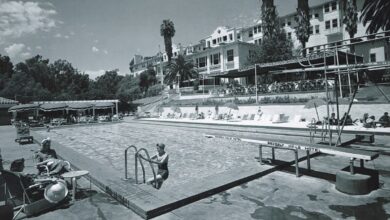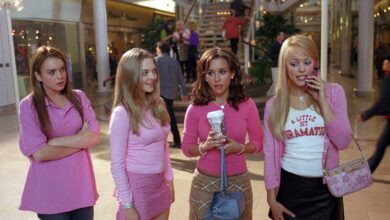The Notre-Dame fire has inspired a new disaster movie, and it speaks directly to France’s soul

Monday 15 April, 2019. It’s a beautiful spring evening in France’s capital city and the soul of Paris is burning. As the trees lining the Champs-Élysées shimmer in the generous April heat, the crowds begin to gather. They raise their phones to the sky like a prayer. Flames tower over the monumental spire of Notre-Dame. The most famous building in the world is engulfed.
Within an hour and a half of the cathedral catching alight, Cher had tweeted. “Devastation & [heartbreak emoji]… French are strong, & [America] & [the world] Will Never Forget Those with The Spirit Of La Marseillaise,” she wrote, characteristically. Hamilton’s Lin Manuel Miranda also publicly acknowledged the spectacle, gushing to his 3.6 million twitter followers, “Standing here next to you, heartsick for Notre Dame…”. Beneath his tweet, which has since accumulated upwards of 4,000 retweets and 42.3k likes, a user wrote, “Thank you, man. I don’t know anyone else who appreciates the gravity of this at the moment.” It is not clear whether the user was being sarcastic.
Less than 24 hours later, the world’s most celebrated philanthropists had also sat up and taken note. Apple CEO Tim Cook publicly declared that “Apple will be donating to the rebuilding efforts to help restore Notre-Dame’s precious heritage for future generations”. The wealthiest of France’s billionaires, luxury goods magnate Francois-Henri Pinault and fashion mogul Bernard Arnault, pledged a combined total of more than $300m (£250m) towards Notre-Dame’s restoration. They were so quick to take action that their pledges were made public before the dying embers of the fire had been put out.
“The politics of philanthropy [are] really complex, and I think a lot of it has to do with public image,” says Mayanne Soret, a French expat and arts producer now living in Scotland. “It’s always favourable politically to align yourself with a building than to align yourself with people. There’s just so many other things that they could be spending their money on.”
This week, a dramatic recreation of the fire and its aftermath has hit cinemas. Notre-Dame on Fire sees the incident given a disaster-movie makeover, with filmmaker Jean-Jacques Annaud using as his basis more than 162 interviews with personnel on the ground that day. We witness Notre-Dame’s custodian of artefacts’ chaotic sprint from Versailles back to his workplace in a last-ditch attempt to save the crown of thorns. We also watch as cascading rivers of hot lead spill out of the mouths of the cathedral’s 12th-century gargoyles.
As in its forerunners within the genre, from Titanic to the Final Destination franchise, there are suspenseful hints throughout of what is to come. Sparks fly from power tools, construction workers charge their phones from clogged power sockets. Up on the roof, a worker reveals a packet of cigarettes hidden in the cuff of his trousers, sneakily lighting up as a sign reading “No Smoking Allowed” looms ominously nearby. At ground level, a tour guide remarks that 1,300 tree trunks were used to build Notre-Dame. Whether this is played for laughs or not, it feels as though Annaud is really hammering a key point here: trees burn.
There are silly moments in the film, like when a small child runs back into the burning cathedral so she can… light a candle at the feet of the Virgin Mary. But Annaud’s film is actually a fitting tribute. Though more than aware of its own melodrama, it understands the reverential importance of the cathedral in France, and its status as a quasi-metaphor for the country’s soft power. It also paints a gripping picture of the media hysteria that burnt through the cultural and political landscape in the aftermath of the inferno, ultimately proving it was justified.
Since its initial completion in 1345, Notre-Dame has always been caught between restoration and reinvention. From its desecration in 1789, at the outset of the French Revolution, through to its restoration by Napoleon between 1844 and 1864, Notre-Dame has witnessed the turbulence of French history and remained standing.
Today it is considered to be the apex of French-Gothic style, with its glittering jewel-hued rose windows and its gravity-defying spire reaching upwards towards the heavens. It’s these achievements and many more that make it the ultimate icon for architects and conservationists. Even Le Corbusier, one of the 20th century’s most pioneering architects, is noted as having described the cathedral’s westerly façade as “the pure creation of the spirit”.
In the 12th century, under the direction of Bishop Maurice de Sully, the originally appointed architect of Notre-Dame – a figure shrouded in mystery, whose identity has been lost to time – put in motion a series of events that introduced what was, at the time, a revolutionary approach to building.
Young and highly skilled, this new breed of architect was keen to use newly drafted techniques in construction, freeing the interior of the cathedral by the use of rib vaults as well as embellishing its design with stained glass and other decorative forms. What they created was nothing short of a miracle, pioneering the use of flying buttresses and creating a visual symbol of the nation of France and the very soul of Paris.
It was the contribution of architects that would be crucial to Notre-Dame’s next rebirth. In the immediate aftermath of the blaze, and following President Macron’s promise to the French people that Notre-Dame would be restored to its glory by 2024, a deluge of architectural proposals were made live. Firms competed against one another to reshape Notre-Dame for ever.
Rather than restoring the destroyed spire, Stockholm studio Ulf Mejergren proposed turning the space where the spire and the attic had been into an open-air pool, which would have “unmatched views over Paris”. Other proposals included Vincent Callebaut’s suggestion to install a new roof that would generate energy, containing an “aquaponic farm”. Miysis Studio’s idea was to combine a reconstruction of the spire with a modern glazed roof to “find the right balance between history and the future”. Glass is, after all, less flammable than wood.
For French citizens in the UK, Notre-Dame has always been more than just a building. Business owner Thierry Dumouchel first heard of the blaze on the radio, where through tinny speakers news reporters spoke of an inferno ravaging the national monument of his home country.
“I came home and immediately turned the TV on,” he tells me. Born in Normandy but working between Paris and Garforth, where he runs a boulangerie, patisserie and chocolatier, he remembers his experience of seeing Notre-Dame on fire as a sobering one. “I’m a Catholic, and you can’t help but feel connected to the building in a very real way… this is a monument where you go to recover yourself and seek rest. It’s a huge part of our schooling and history. To see it on fire… I was heartbroken.”
Jean-Jacques Annaud on the set of ‘Notre-Dame on Fire’
Three years on, it’s easy to dismiss much of the charged emotion that surrounded the fire of Notre-Dame as an overreaction. No one died. The billionaires shared their wealth. The cathedral is now in the process of being rebuilt. But Annaud’s 110-minute dramatisation – while melodramatic – does capture the very real and profound connection ordinary people have with architecture, showcasing how hundreds were willing to risk their lives to save the building from becoming a mountain of glass, stone and ash.
“It’s a bit unfair to call it just a building,” Mayanne tells me. “You have to acknowledge the power it has, its intentional national mythology, and the fact that this is a beautiful building that has withstood the test of time. You don’t lose anything by saying how precious it is.”
Thierry feels a similar emotional resonance, remembering the first time he visited the cathedral as a child on a school trip. It’s an experience that serves as a rite of passage for many French nationals. “When I went through the door, something magical happened,” he says. “Even as an unenthusiastic child you can’t help but be in awe… Now, with the benefit of life and with experience, you can really start to understand how impressive it is.” It’s evident that the mystique around Notre-Dame endures, pushing ordinary people to starry-eyed hyperbole, its power undimmed despite its scars.
It’s unclear how strongly British audiences will connect to a film so full of French national pride. Personally, it made me grateful that, across the sea and hundreds of miles away, Notre-Dame is still standing. The ultimate survivor, she lives to see another day.
It’s a bit unfair to call it just a building. You have to acknowledge the power it has




